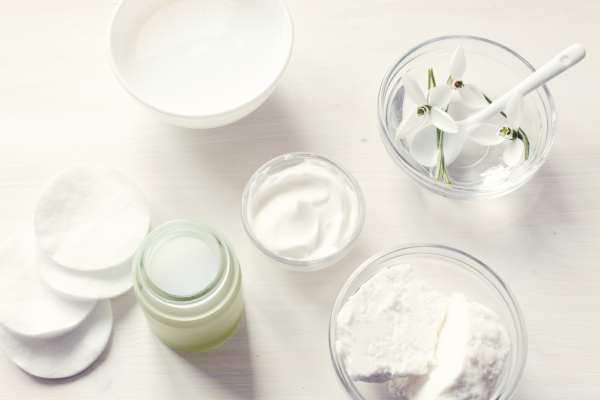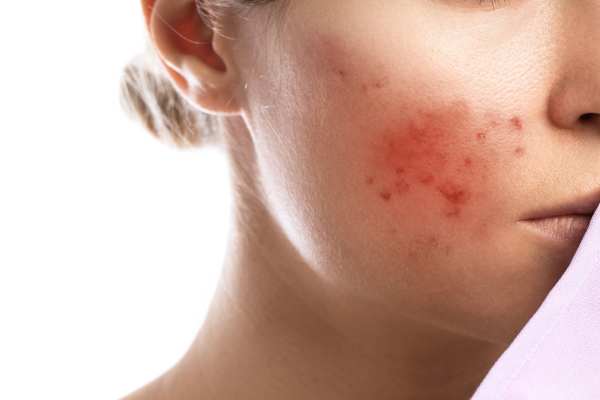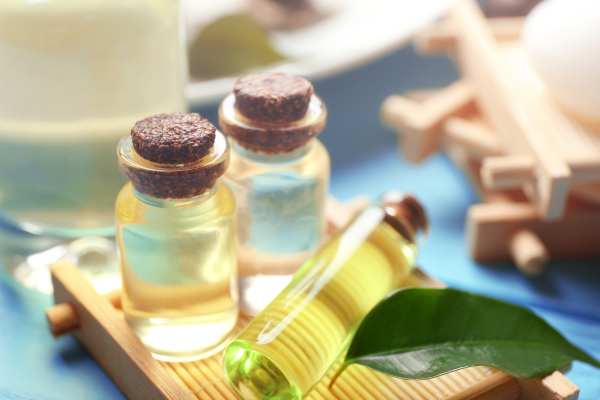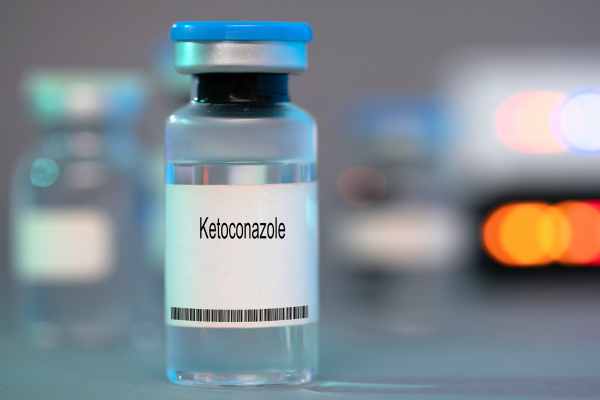Best Fungal Acne Cleanser: What to Look Out For
Cleansing is important with fungal acne and taking action with an appropriate fungal acne treatment is a must. The first step, cleansing, is crucial. A cleanser is designed to clean the skin by gently removing dirt, oil, and makeup, while a face wash is a type of cleanser specifically formulated for washing the face (soap based).
If you have fungal acne1 and are looking for the best fungal acne cleanser or face wash (different products!) you should read this first: cleansers tend to be more gentle and moisturizing than face washes, which usually contain surfactants (soap based ingredients) which lather and cleanse in a way that the natural oils can be stripped off very easily. I personally love face washes in the summer and more mild cleansers in the winter, but this is my own personal choice.
Perhaps you already have made up your mind about using a cleanser and that’s fine, but below I will explain what’s best for this type of acne so you can make a more informed decision.
What’s best for fungal acne, a facial cleanser or a facial wash?

For fungal acne it is probably better to get a facial cleanser rather than a face wash. Why? Cleansers are GENTLE and can help to prevent the skin from getting even more irritated.
Cleansers can also help moisturize and hydrate the skin, depending on the ingredients (more on that below), which will hep to maintain the skin’s natural barrier.
This, in turn, helps prevent the growth of Malassezia yeast2.
| Product Type | Characteristics | Benefits for Fungal Acne | Ingredients to Look For | Ingredients to Avoid |
|---|---|---|---|---|
| Facial Cleanser | Gentle, moisturizing, and hydrating | Helps prevent further irritation or inflammation, maintains skin’s natural barrier | Ketoconazole, pyrithione zinc, salicylic acid, sulfur, tea tree oil, neem oil, turmeric | Certain oils, fatty acids, occlusive ingredients |
| Face Wash | Stronger surfactants, lathers to thoroughly cleanse the skin | Thoroughly cleanses the skin, removing excess oil and dirt | Ketoconazole, pyrithione zinc, salicylic acid, sulfur, tea tree oil, neem oil, turmeric | Certain oils, fatty acids, occlusive ingredients |
Whatever you choose make sure the product is either targeted for fungal acne or at least that the formulation will not aggravate it.
I prefer natural ingredients like tea tree oil3, neem oil4, lactic acid, apple cider vinegar5 or turmeric6 but I understand that some of you would prefer non-natural, stronger ingredients like pyrithione zinc, salicylic acid or sulfur.
Either way, make sure to always consult with a dermatologist to get personal advice on the matter.
A Little About Fungal Acne First
Fungal acne, also known as Malassezia folliculitis or Pityrosporum folliculitis, is a skin condition caused by an overgrowth of yeast on the skin’s surface.
Unlike regular acne, which is typically caused by bacteria, clogged pores, and inflammation, fungal acne is primarily due to an imbalance in the skin’s natural flora.
This condition is more common in individuals with a compromised skin barrier, sensitive skin, or acne-prone skin.

The symptoms of fungal acne include small, itchy, red bumps that resemble regular acne. However, the key difference is that fungal acne may not respond to traditional acne treatments like benzoyl peroxide. Instead, a targeted skincare routine with products specifically formulated for fungal acne is essential. For example, a gentle foam cleanser may be more appropriate for fungal acne, as it helps maintain the skin’s barrier without causing further irritation.
Here we will discuss the best fungal acne cleansers for different skin types, as well as ingredients to look for and avoid in skincare products. Understanding your skin type and the unique needs of fungal acne will help you build an effective skincare routine to treat and prevent this type of folliculitis.
Ok, now, without further ado, let’s find out best cleansers for fungal acne. Both natural options and non-natural option.
It is Very Important to Choose the Right Cleanser
We need to select the right cleanser as it does play a crucial role in treating as well as helping prevent fungal acne. The right cleanser can effectively:
1) remove oil from the skin
2) soothe the skin
3) eliminate dead skin cells
all without causing further irritation or promoting the growth of Malassezia yeast.
Using the wrong cleanser can exacerbate the condition, leading to more persistent and stubborn fungal acne.
A gentle cleanser, such as a gel cleanser, is often recommended for fungal acne as it can effectively cleanse the skin without being overly harsh. Gel cleansers can also be beneficial for removing makeup products, dirt, and excess oil without compromising the skin’s natural barrier. For those dealing with fungal acne on both the face and body, it is essential to choose a cleanser that is safe for fungal acne.
Below the Ingredients to Look Out For
If You Prefer Natural Ingredients (My Recommendation)

- Tea tree oil: Known for its antimicrobial and anti-inflammatory properties, tea tree oil can help treat fungal acne breakouts and soothe the skin.
- Neem oil: This natural oil has antifungal, antibacterial, and anti-inflammatory properties, making it an effective ingredient in acne skincare and fungal acne safe products.
- Turmeric: With its anti-inflammatory and antimicrobial benefits, turmeric can help reduce inflammation and treat fungal acne.
- Aloe vera7: Aloe vera is a popular ingredient in the best face washes for its soothing and hydrating properties, which can help calm irritated skin and maintain the skin’s barrier.
- Honey: Honey is a natural humectant and has antibacterial and antifungal properties, making it a suitable addition to fungal acne safe face masks and cleansers.
- Green tea: Rich in antioxidants, green tea can help protect the skin from damage, reduce inflammation, and support acne and fungal acne treatment.
- Apple cider vinegar: The acidic nature of apple cider vinegar can help balance the skin’s pH and inhibit the growth of Malassezia yeast.
Argan oil maybe be helpful for bacterial acne (acne vulgaris), although this always depends on the individual, but it won’t be good for fungal acne. Please check my article on why argan oil is not suitable for fungal acne.
Non-Natural Ingredients

- Ketoconazole: This antifungal ingredient can be found in some of the best face washes for fungal acne, as it targets the Malassezia yeast responsible for fungal acne.
- Pyrithione zinc: With antifungal and antibacterial properties, pyrithione zinc can help treat fungal acne and is often found in acne foaming cleansers.
- Salicylic acid: This beta-hydroxy acid helps exfoliate dead skin cells, unclog pores, and treat fungal acne breakouts.
- Sulfur: Sulfur can help reduce inflammation, remove excess oil, and eliminate dead skin cells, making it a common ingredient in fungal acne safe cleansers and face masks.
All the above ingredients are effective against fungal acne, both at treating and preventing it.
Look for face washes, cleansers, and face masks that contain these ingredients to ensure you’re using the best fungal acne safe products for your skin.
Below are the Ingredients to Avoid
When dealing with fungal acne, it is essential to choose the right skincare products and avoid certain ingredients that may worsen the condition or promote Malassezia growth. Here are some ingredients to avoid:
- Oils as well as fatty acids: Some oils and fatty acids can promote the growth of Malassezia yeast, leading to fungal acne breakouts. Avoid using products with ingredients like oleic acid, palmitic acid, and certain plant oils, as they may exacerbate fungal acne symptoms.
- Occlusive ingredients (i.e. petrolatum, mineral oil, silicones): These ingredients, often used in skincare products to draw moisture into the skin and strengthen the skin barrier, can sometimes trap excess oil on the skin and create a favorable environment for fungal infections.
When choosing the best fungal acne-safe cleanser, make sure your skincare routine includes products like moisturizers and makeup removers that are also gentle on the skin and suitable for all skin types, including sensitive and reactive skin.
Go for a hydrating cleanser or an acne foaming cream that can effectively remove excess oil from the skin without compromising the skin’s barrier. That is the trick! A strong skin barrier is essential to prevent fungal acne and regular acne.
Examples of Cleansers that Would be Helpful (Natural and Non-Natural Options)
Natural Fungal Acne Cleansers
- Try a gentle herbal cleanser: Look for a face cleanser that is specifically formulated for fungal acne-prone skin, with lovely and natural ingredients such as tea tree oil, neem oil, and aloe vera (I use aloe vera in my daily skincare routine). These types of ingredients will help soothe and repair the skin barrier, leaving the skin feeling clean as well as refreshed.
- Turmeric & Honey Foaming Face Wash: A fungal acne-safe face wash that combines the anti-inflammatory benefits of turmeric with the antibacterial properties of honey. It gently cleanses the skin without causing irritation, making it suitable for sensitive and acne-prone skin.
- Green Tea & Apple Cider Vinegar Gel Cleanser: This natural gel cleanser contains green tea extract and apple cider vinegar to help nourish the skin and balance its pH levels. It effectively removes excess oil and makeup, making it a safe makeup remover for fungal acne sufferers.
Non-Natural Fungal Acne Cleansers
- Ketoconazole Foaming Facial Cleanser: This yeast acne-safe cleanser is formulated with ketoconazole, an antifungal ingredient that targets the Malassezia yeast responsible for fungal acne. It’s a safe and effective option for washing your face and treating fungal acne without irritating the skin.
- Zinc Pyrithione Purifying Face Wash: This drugstore fungal acne face wash contains zinc pyrithione, an ingredient known for its antifungal and antibacterial properties. The gentle formula is suitable for daily use and helps to clear your skin without worsening fungal acne.
- Salicylic Acid & Sulfur Acne Foaming Cream: This acne foaming cream is designed to treat both acne vulgaris and fungal acne, thanks to its combination of salicylic acid and sulfur. It effectively exfoliates and unclogs pores, making it one of the best facial cleansers for fungal acne.
How to Use a Fungal Acne Cleanser
Proper usage of a fungal acne cleanser is crucial in dealing with acne effectively.
Follow these step-by-step instructions, frequency guidelines, and additional skincare tips to get the best results from your fungal acne-safe products:
Step-by-step instructions:
- Wet your entire face or body with lukewarm water, making sure your skin is damp before applying the cleanser.
- Dispense a small amount of the best fungal acne safe cleanser onto your fingertips or a gentle cleansing tool.
- Gently massage the cleanser onto your skin using circular motions, making sure to cover the entire affected area.
- Rinse your skin thoroughly with lukewarm water to remove all traces of the cleanser.
- Pat your skin dry with a clean towel, taking care not to rub or cause irritation.
Frequency of usage:
The frequency of using a fungal acne cleanser depends on the specific product and the severity of your acne. It’s best to start with once daily, preferably at night, and adjust according to your skin’s needs. If your skin tolerates the cleanser well, you may increase the usage to twice daily—once in the morning and once at night. Be mindful of over-cleansing, as it can strip the skin of natural oils and worsen fungal acne.
Additional skincare tips:
- Choose fungal acne-safe products for your entire skincare routine, including moisturizers, serums, and sunscreens.
- Avoid using occlusive and comedogenic ingredients that can exacerbate fungal acne.
- Be patient, as it may take time to see results. Dealing with acne, whether it’s cystic acne, fungal acne, or other forms of acne, requires consistency and persistence.
- Consult a dermatologist if your acne doesn’t improve or worsens after following a fungal acne skincare routine.
By choosing the best fungal acne-safe cleanser and using it correctly, you can effectively manage and prevent fungal acne breakouts.
Consult with a Dermatologist
Dealing with fungal acne can be challenging, and while there are many over-the-counter products available, consulting a dermatologist is an essential step in ensuring proper diagnosis and personalized treatment.
Here’s why professional help is crucial:
Importance of professional help:
- Accurate diagnosis: Fungal acne is often mistaken for other types of acne or skin conditions. A dermatologist can accurately diagnose your skin issue and differentiate between fungal acne, acne vulgaris, or other skin concerns.
- Expert guidance: Dermatologists have in-depth knowledge of skin conditions and their treatments. They can provide expert guidance on the appropriate skincare routine, products, and lifestyle changes to help manage your fungal acne effectively.
- Prescription treatments: In some cases, over-the-counter products may not be enough to treat fungal acne. A dermatologist can prescribe stronger antifungal medications, topical creams, or oral medications to help address more severe or persistent cases.
- Addressing underlying causes: Fungal acne may be triggered by other factors such as hormonal imbalances, diet, or stress. A dermatologist can help identify and address these underlying causes, providing a comprehensive approach to your treatment plan.
Seeking a personalized treatment plan:
A consultation with a dermatologist allows you to receive a personalized treatment plan tailored to your specific skin type, condition, and needs. This plan may include:
- Recommendations for the best fungal acne-safe cleansers, moisturizers, and other skincare products.
- Guidance on adjusting your skincare routine and habits, such as cleansing frequency, makeup use, and sun protection.
- Suggestions for lifestyle changes, such as dietary modifications, stress management techniques, or exercise routines, to improve your overall skin health.
- Prescription medications or treatments, if necessary, to address more severe or persistent fungal acne cases.
In conclusion, consulting a dermatologist is an invaluable step in managing and treating fungal acne. Their expertise and personalized approach can help you achieve clearer, healthier skin.
References
- Del Rosso JQ, Silverberg N, Zeichner JA. When Acne is Not Acne. Dermatol Clin. 2016; 34(2):225–8.
- Saunte DML, Gaitanis G, Hay RJ. Malassezia-Associated Skin Diseases, the Use of Diagnostics and Treatment. Front Cell Infect Microbiol. 2020; 10:112.
- Nenoff P, Haustein UF, Brandt W. Antifungal activity of the essential oil of Melaleuca alternifolia (tea tree oil) against pathogenic fungi in vitro. Skin Pharmacol. 1996; 9(6):388–94.
- Khan M, Schneider B, Wassilew SW, Splanemann V. [Experimental study of the effect of raw materials of the neem tree and neem extracts on dermatophytes, yeasts and molds]. Z Hautkr. 1988; 63(6):499–502.
- Gopal J, Anthonydhason V, Muthu M, Gansukh E, Jung S, Chul S, et al. Authenticating apple cider vinegar’s home remedy claims: antibacterial, antifungal, antiviral properties and cytotoxicity aspect. Nat Prod Res. 2019; 33(6):906–10.
- Singh M, Alka null, Lee KE, Kumar P, Kang SG. Curcuma Turmeric Oil Enhanced Anti-Dermatophytic Drug Activity Against Candida albicans and Trichophyton mentagrophytes. Curr Drug Deliv. 2021; 18(10):1494–504.
- Nabila VK, Putra IB. The effect of Aloe vera ethanol extract on the growth inhibition of Candida albicans. Med Glas (Zenica). 2020; 17(2):485–9.
